Emergencies don’t give us a heads up before they knock at our doors, leaving many of us fumbling around in fretful uncertainty about the safety of our treasured loved ones. Believe me, I’m not unfamiliar with that lump-in-the-throat worry – just like you, I’ve lain awake nights pondering how to shield my family best during unpredictable crises.
Guided by countless resources, studies and nuggets of wisdom from disaster preparedness experts, I’ve managed to sift through this information overload into nine clear-cut yet impactful steps for your family’s emergency readiness.
Let’s embark on this journey together towards instilling calm within chaos as we explore “Family Emergency Preparedness: 9 Ways to Success”.
Key Takeaways
- Create a family emergency plan that includes a communications plan, evacuation strategy, and disaster go-bag to ensure everyone knows what to do during an emergency.
- Identify potential emergencies in your area, such as natural disasters and hazards specific to your location, and understand the risks involved.
- Gather essential items like food, water, heat sources, power sources, basic medical supplies, and emergency shelter in a disaster supply kit to sustain your family for at least 72 hours.
- Involve your children in the preparation process by educating them about different types of emergencies, teaching them how to call for help if needed, and regularly practicing emergency plans.
Understanding the Basics of Family Emergency Preparedness
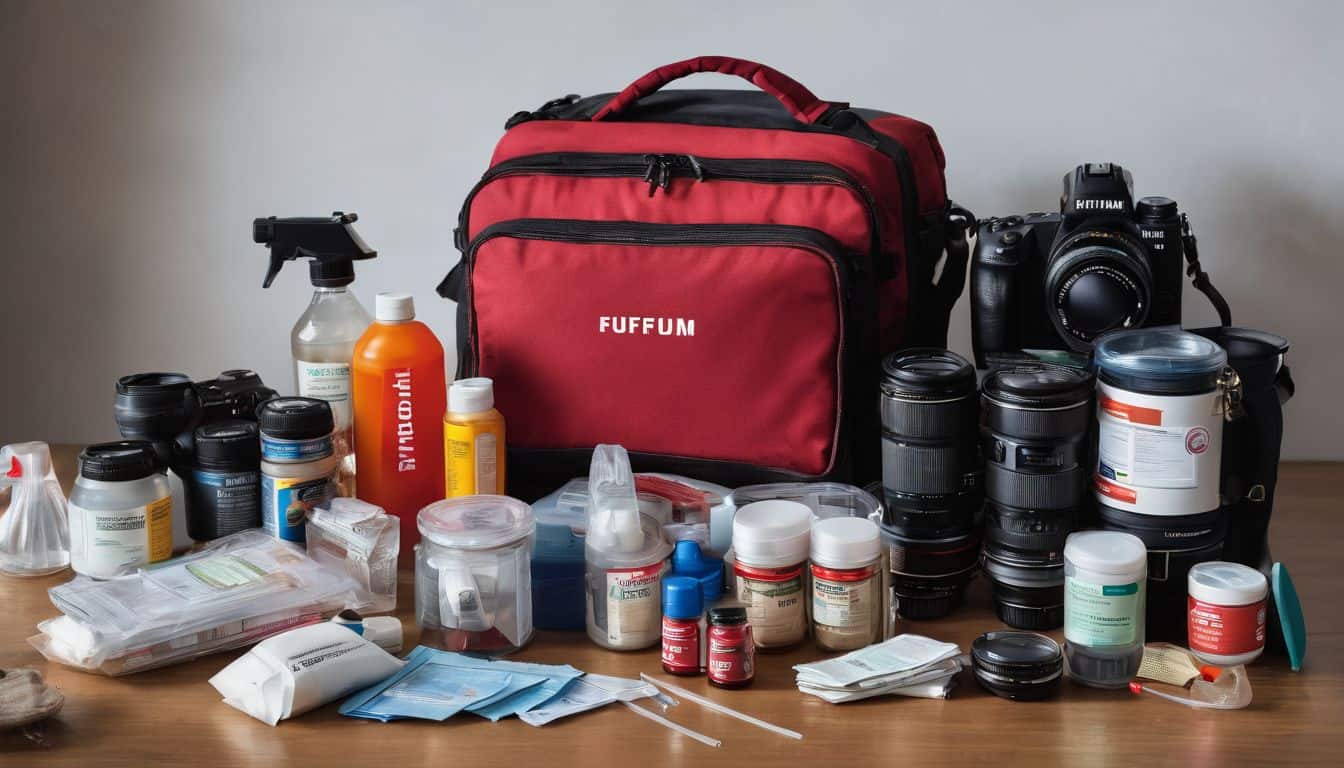
Getting ready for an emergency is a must. We all hope bad things won’t happen to us. But, it’s smart to be ready just in case. The first step in being ready is making a plan for your family.
This plan lays the groundwork for what you’ll do when disaster strikes. It includes who will reach out to each other, where you’ll go and what supplies you need. It’s important not just to have this plan but also make sure every family member knows it well.
I strongly believe that knowing what to do can help everyone feel calm during an emergency.
You should also consider having more than one meeting spot set up – somewhere close by and another place farther away, like across town or even out of the city.
Prepare an emergency contact card with names and phone numbers too! These are simple yet effective steps towards keeping your family safe!
Identify Potential Emergencies
To successfully prepare for emergencies, it is crucial to identify potential emergencies that could occur in your area, such as natural disasters like hurricanes or hazards specific to your location.
Natural disasters
I know firsthand how important it is to identify potential emergencies in your area. Earthquakes, floods, wildfires, and hurricanes are examples of natural disasters that can happen without much warning.
Living in a place where these types of catastrophes are common means you need a solid emergency response.
Disaster management begins with understanding the risks around you. Take time to learn which hazards might affect your town or city. For instance, if you live near a river, there might be a risk for floods.
If in a forested area, wildfires could be possible threats. Knowledge is key in reducing vulnerability and boosting resilience against these events.
The Red Cross offers excellent resources on this topic and they even help families make an emergency preparedness plan! Let’s put safety first and protect ourselves from the unexpected effects of natural disasters by being well-prepared at all times.
Hazards in your area
I live in an area with its own risks. Storms, fires, and floods top the list of common hazards. Understanding these dangers is key for my family’s safety plan. I make sure to stay informed about local weather conditions and fire risk levels.
I also have a battery-powered radio in case power goes out during a storm. This way we won’t miss any emergency alerts from local officials or Weather Apps on our phones. We know how vital it is not to take risks lightly.
By preparing ahead of time, we boost our community’s resilience and increase our chances of recovery after an event.
Create a Family Emergency Plan
To effectively prepare for potential emergencies, it is essential to create a comprehensive family emergency plan that includes a communications plan, evacuation strategy, and disaster go-bag.
Create a communications plan
Creating a communications plan is really important when it comes to being prepared for emergencies. You need to have contact information for your family members and other important people or offices.
It’s a good idea to have a paper copy of this information in case you can’t use your phone or computer during the disaster. Another helpful thing is to pick an out-of-town contact person who can help reconnect family members if you get separated.
And remember, having effective communication strategies is key in emergency situations.
Make an evacuation plan
Making an evacuation plan is a crucial part of being prepared for emergencies. It helps you know what to do and where to go if you need to leave your home quickly. First, identify safe meeting places outside the affected area where your family can gather.
It might be a neighbor’s house or a nearby park. Next, map out primary and alternative evacuation routes in case one is blocked or unsafe. Make sure everyone knows these routes and practice using them during drills at least twice a year.
Remember, being prepared can make all the difference in staying safe during an emergency.
Create a disaster go-bag
Creating a disaster go-bag is an important step in being prepared for emergencies. In your go-bag, make sure to include important family and emergency contact information, like phone numbers and addresses.
It’s also a good idea to have a paper copy of this information for each family member. The Federal Emergency Management Agency (FEMA) provides guidelines for what should be included in a basic go-bag or emergency kit.
Make sure you gather supplies that can support your family for up to 72 hours.
Involve your kids
When it comes to family emergency preparedness, involving your kids is crucial. It helps them feel more reassured and prepared for emergencies. You can teach your children about different types of emergencies and how to call 9-1-1 for help.
There are resources available that can assist you in educating your children about emergency preparedness, such as books and online materials. Regularly practicing emergency plans with your kids is essential so they know what to do when a real emergency happens.
By involving your children in creating a family emergency plan, you are teaching them important communication skills and ensuring their safety during challenging times.

Create a Disaster Supply Kit
Gather essential items like food, water, heat sources, power sources, basic medical supplies, emergency shelter, and refer to an emergency supplies checklist for guidance.
Food and water
In a disaster supply kit, it’s crucial to have enough food and water to sustain your family for several days. I recommend having a 3-day supply of food on hand in case there are any disruptions to the normal food supply during an emergency.
It’s important to choose non-perishable food items that can be stored for a long time. Some examples include canned goods, dried fruits, nuts, energy bars, and ready-to-eat meals. Make sure you also have enough water for each person in your family – at least one gallon per person per day.
Remember to regularly check expiration dates and replace any expired or spoiled items in your emergency kit.
Creating a Disaster Supply Kit is essential when preparing for emergencies or disasters. In addition to basic essentials like food and water, make sure you include personal care items such as toothbrushes, toothpaste, soap, toilet paper, and feminine hygiene products.
Portable lights like flashlights or lanterns with extra batteries should also be part of your kit so that you can see in case of power outages. Emergency blankets will provide warmth if needed.
Heat source
When it comes to creating a disaster supply kit for your family, it’s important to include a heat source. In case of an emergency or power outage, having a way to stay warm can make all the difference.
Some options for heat sources include firewood, propane, electric heaters, natural gas, solar heating, pellet stoves, oil heaters, wood pellet fuel, charcoal, and oil burners. Make sure you have enough fuel or supplies for your chosen heat source and keep it stored safely in your disaster supply kit.
Remember to follow safety guidelines when using any type of heating device. Having a reliable heat source can provide comfort and warmth during challenging times.
Fuel sources
When preparing for emergencies, it is crucial to have fuel sources in your disaster supply kit. These fuel sources can help you cook food, stay warm, and even power certain devices during a crisis.
It’s important to include fuel options like camping stoves or portable grills that use propane or butane. Additionally, having fire-starting materials like matches or lighters will come in handy if you need to start a fire for warmth or cooking purposes.
Remember to store these fuel sources safely and keep them away from flammable materials. By including fuel sources in your emergency preparedness plan, you can ensure that you and your family are ready for any situation that may arise.
Power sources
When preparing for emergencies, it’s important to have reliable power sources. In your disaster supply kit, make sure you include extra batteries for flashlights or radios. You might also consider having a portable charger for your cell phone in case the power goes out.
Additionally, if you rely on medical devices that require electricity, like oxygen tanks or dialysis machines, have a backup plan in place. A generator can be useful for powering essential appliances during an extended power outage.
Keep in mind that fuel sources may be needed to keep generators running, so stock up on gasoline or propane as necessary. By having these power sources available, you’ll be better prepared to handle any emergency situation that comes your way.
Basic medical supplies
In case of an emergency, it’s crucial to have basic medical supplies in your disaster supply kit. These supplies can help you take care of minor injuries and stay healthy during a crisis.
Here are some important items to include:.
– Bandages: Stock up on sterile dressings and adhesive bandages of different sizes. They can be used to cover wounds and prevent infection.
– Antiseptic ointment: This helps clean wounds and reduce the risk of infection. Look for antimicrobial ointments that contain ingredients like bacitracin or neomycin.
– Pain relievers: Include over-the-counter analgesics like acetaminophen or ibuprofen in your kit. They can help alleviate pain from headaches, muscle aches, or other discomforts.
Emergency shelter
In case of an emergency, having a shelter is crucial for your family’s safety. You can create a disaster supply kit to ensure you have everything you need. This kit should include essential items like food, water, clothing, and hygiene products.
By following the American Red Cross Sheltering Handbook, you can prepare a shelter kit that meets all the necessary requirements for opening and running a short-term shelter. It’s important to have these supplies readily available so that you can maintain basic needs and provide temporary housing during crisis situations.
Emergency supplies checklist
When preparing your family emergency kit, it’s important to have a checklist to make sure you have all the necessary supplies. Here are some key items to include:
- Food: Non-perishable items that can last for several days, such as canned goods, granola bars, and dried fruits.
- Water: Have at least one gallon of water per person per day. Consider also having water purification tablets or a filtration system.
- First aid kit: Include bandages, antiseptic wipes, gauze pads, adhesive tape, and any necessary medications.
- Tools: Have a multi-purpose tool, flashlight with extra batteries, duct tape, and matches or a lighter.
- Important documents: Take copies of identification documents, insurance policies, and any other important papers in a waterproof bag.
- Clothing and bedding: Pack extra clothes and blankets for each family member.
- Medications: Make sure you have an ample supply of prescription medications for everyone in your family.
- Pet supplies: Don’t forget about your furry friends! Include food, water, bowls, leash, and any necessary medication for your pets.
Stock Up for Your Animals
Ensure the safety and well-being of your furry friends by stocking up on essential supplies, like food, medication, and an emergency kit. Don’t forget to include contact information for your veterinarian in case of any emergencies.
Read more to learn how to protect your beloved pets during times of crisis.
Food
To make sure our pets are prepared for emergencies, it’s important to stock up on their favorite foods. During disasters, it may be difficult to find pet food at local stores, so having a good supply on hand is essential.
Along with food, we should also ensure that our pets have access to clean water during these situations. It’s not just about survival; proper nutrition and hydration can help keep our furry friends healthy and safe in challenging times.
So let’s remember to include plenty of pet food and water in our emergency plans and kits!
Medication
In a family emergency, it’s important to stock up on medication for your animals. As a survival enthusiast, you know that being prepared means taking care of your furry friends too.
When putting together your disaster preparedness kit, make sure to include any necessary medication for your pets. It’s also a good idea to have extra supplies on hand in case the emergency lasts longer than expected.
Remember to check expiration dates regularly and rotate medications as needed. By planning ahead and having the right medication available, you can ensure the well-being of your animals during a family emergency.
Emergency kit
During a family emergency, it’s important to have an emergency kit ready for your pets. You can include pet supplies in your general emergency kit or create a separate one specifically for your furry friends.
Make sure to include items like food, water, medications, veterinary records, and blankets. It’s also a good idea to consult with a veterinarian to determine the right first aid kit for your pet’s medical needs.
For hurricane emergencies, consider adding bandages, antibiotic ointment, flea and tick prevention products, gloves, and alcohol to their kit. Taking these steps will help ensure that your pets are safe and well taken care of during any unexpected situation.
Vet contact information
Having the contact information of your veterinarian readily available during an emergency is crucial for the well-being of your pets. The American Veterinary Medical Association emphasizes the importance of having this information on hand, as it allows you to quickly reach out for assistance and guidance when needed.
In collaboration with emergency management officials, veterinarians play a vital role in ensuring that animals receive proper care during disasters. Make sure to include your vet’s contact details in your family’s emergency plan and keep them easily accessible.
This way, if something happens, you can promptly connect with professionals who have the knowledge and authority to help safeguard your furry friends.
Store Enough Food and Water
Store non-perishable goods and explore long-term storage solutions for food and water, ensuring your family has an ample supply in case of emergencies.
Non-perishable goods
When it comes to family emergency preparedness, having a supply of non-perishable goods is crucial. These are foods that can be safely stored at room temperature for a long time without spoiling.
Examples of non-perishable goods include shelf-stable foods, long-lasting food items, and non-perishable pantry staples. It’s recommended to have a three-day supply of these items in case of an emergency or disaster.
The great thing about non-perishable goods is that they can be stored indefinitely if kept in proper containers. Just remember to use them first during an emergency situation and consider their storage life when preparing your emergency food supply.
Long-term storage solutions
To be fully prepared for emergencies, it’s important to have long-term storage solutions for food and water. This means stockpiling supplies that can last for an extended period of time.
For food, make sure to choose non-perishable goods that have a long shelf life. Canned foods are a good option because they can stay safe to eat for a long time. Just remember to rotate your supply and use the oldest cans first.
When storing food, keep it off the floor and on shelves that are 2-3 feet above ground level. As for water, it’s crucial to have enough stored for drinking, cooking, and sanitation purposes.
Create a Family Preparedness Plan Go-Bag
Gather essential communication devices, critical documents, a first-aid kit, and comfort items for your go-bag.
Communication devices
In a family emergency, having effective communication devices is crucial. We need to be able to stay connected and informed. That’s why it’s important to include communication devices in your Family Preparedness Plan Go-Bag.
One way to ensure you have the necessary contact information is by creating contact cards for each family member. These should include emergency contact names and numbers, so you can quickly reach out during an emergency.
By keeping these cards easily accessible, everyone will know how to communicate with each other when it matters most.
Another essential communication device is a reliable cell phone or two-way radio. These devices allow you to receive emergency alerts, warnings, and directives from authorities and stay updated on the latest information about self-protective actions.
Make sure you have fully charged batteries or portable power sources available for these devices so they are always ready when needed.
Critical documents
In case of an emergency, it’s crucial to keep your important documents safe. These include things like insurance policies, birth certificates, passports, and prescription information.
Make sure to store them in a secure place where they won’t get damaged or lost. It’s also a good idea to have copies of these documents in your personal go bag for emergencies. That way, you’ll always have them on hand when you need them most.
Remember that having access to critical documents can make things easier during stressful times.
First-aid kit
In a family preparedness plan go-bag, it’s crucial to include a first-aid kit. This kit should contain medication and emergency supplies that may be needed during a disaster. It’s also important to have a first aid kit, manual, and extra medicine for each family member.
Having a well-stocked first-aid kit can be helpful in the first hour following an emergency or disaster. Additionally, learning first aid and CPR is essential in emergency situations.
By having a comprehensive first-aid kit and the knowledge to use it, you’ll be better equipped to handle any medical needs that arise during an emergency or disaster situation.
Comfort items
In a family emergency, having comfort items can make a big difference. It’s important to include these items in your Family Preparedness Plan Go-Bag. Comfort items can vary depending on personal preferences and needs, but some common examples include a favorite blanket or pillow, books or games for entertainment, extra clothing or socks for warmth and comfort, and any necessary medications or comfort objects that provide emotional support.
These small items can bring a sense of familiarity and calm during stressful times. Remember to include them in your go-bag along with other essential supplies.
Practice Your Plan
Practice your plan regularly to ensure that everyone in the family knows what to do in an emergency situation. Conduct drills and exercises, involving all family members, to test their knowledge and response times.
Consider inviting neighbors or community groups to participate for a more realistic experience. By practicing your plan, you will build confidence and improve coordination during an actual emergency.
Run emergency drills
Emergency drills are a crucial part of family emergency preparedness. They help us practice our plan and identify any areas that may need improvement. By simulating different emergency scenarios, we can test our response strategies and ensure everyone knows what to do in case of an actual emergency.
These drills not only build confidence but also help us evaluate the effectiveness of our safety protocols and evacuation procedures. It’s important to involve the whole family, including children, in these drills so that everyone knows their roles and responsibilities.
Remember, by practicing regularly, we can better prepare ourselves for unexpected situations and increase our chances of staying safe during emergencies.
Consider involving the community
When it comes to family emergency preparedness, involving the community is an important step. It can increase our chances of success in dealing with disasters. Organizations should have a formal role in the community’s emergency plan and be included in training activities and exercises.
This way, we can work together to make sure everyone is prepared. We need tailored strategies to reach at-risk groups, especially those who are low-income. It’s crucial to educate ourselves about disasters and understand how they affect both youth and adults.
By taking a whole community approach to emergency management, we can enhance our preparedness and response efforts for any situation that may arise.
Activities for Keeping the Kids Busy
Engaging children during a family emergency can be challenging, so it’s important to have activities on hand to keep them occupied and distracted from the stressful situation.
Distraction activities
During a family emergency, it’s important to keep the kids occupied and distracted. Engaging them in fun activities can help reduce their stress and anxiety. Some great distraction activities include interactive games, creative pastimes, and amusing distractions.
You can play board games or card games together, do some arts and crafts projects, or even have a little dance party. It’s also helpful to have some favorite toys or books on hand to keep them entertained.
Remember, keeping the kids busy with enjoyable activities can make the situation more manageable for everyone involved.
Another effective way to distract children during emergencies is by changing their environment or moving them to a new spot. For example, you might take them outside for a walk if it’s safe to do so or move them into a different room with interesting things to explore.
Sometimes just being in a different setting can help shift their focus away from the stressful situation at hand.
Emergency preparedness activities
Teaching kids about natural hazards like earthquakes, hurricanes, tornadoes, and more is an important part of emergency preparedness activities. It’s crucial to involve the entire family in preparation activities, such as assembling a survival kit and creating a family emergency plan.
Reviewing the plan regularly to ensure everyone knows what to do during disasters is recommended. Engaging children in activities that create a sense of reassurance and preparedness can be helpful too.
So, let’s make emergency preparedness a family affair!
Conclusion on Family Emergency Preparedness
In conclusion, by following these 9 tips for family emergency preparedness, you can ensure the safety and well-being of your loved ones during times of crisis. Remember to create a solid plan, stock up on essential supplies, and practice your emergency drills regularly.
With proper preparation and readiness, you can face any emergency situation with confidence and protect your family. Don’t wait until it’s too late; start preparing today!
FAQs on Family Emergency Preparedness
1. What is family emergency preparedness?
Family emergency preparedness refers to the steps taken by a family to be ready for unexpected events or disasters, such as natural disasters, severe weather, or health emergencies.
2. Why is family emergency preparedness important?
Family emergency preparedness is important because it allows families to respond quickly and effectively during emergencies, ensuring their safety and well-being.
3. What are some essential items for a family emergency kit?
Some essential items for a family emergency kit include non-perishable food, water, a first aid kit, flashlights with extra batteries, blankets, and important documents like identification cards and insurance papers.
4. How can I create an evacuation plan for my family?
To create an evacuation plan for your family, identify safe meeting points both inside and outside of your home. Assign roles to each family member and practice the plan regularly so everyone knows what to do in case of an emergency.
5. Where can I find more information about family emergency preparedness?
You can find more information about family emergency preparedness on websites like FEMA (Federal Emergency Management Agency) or Red Cross. They offer resources and guidelines on how to prepare your family for different types of emergencies.

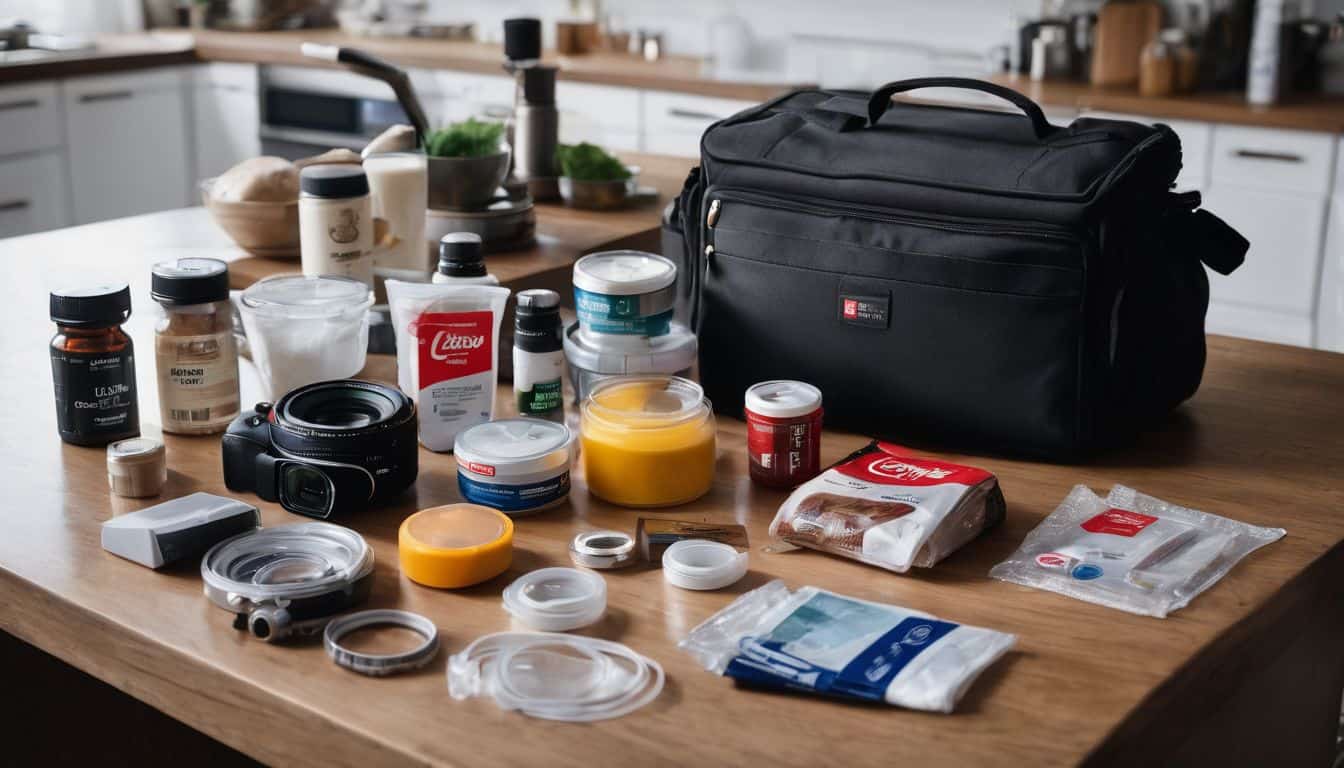
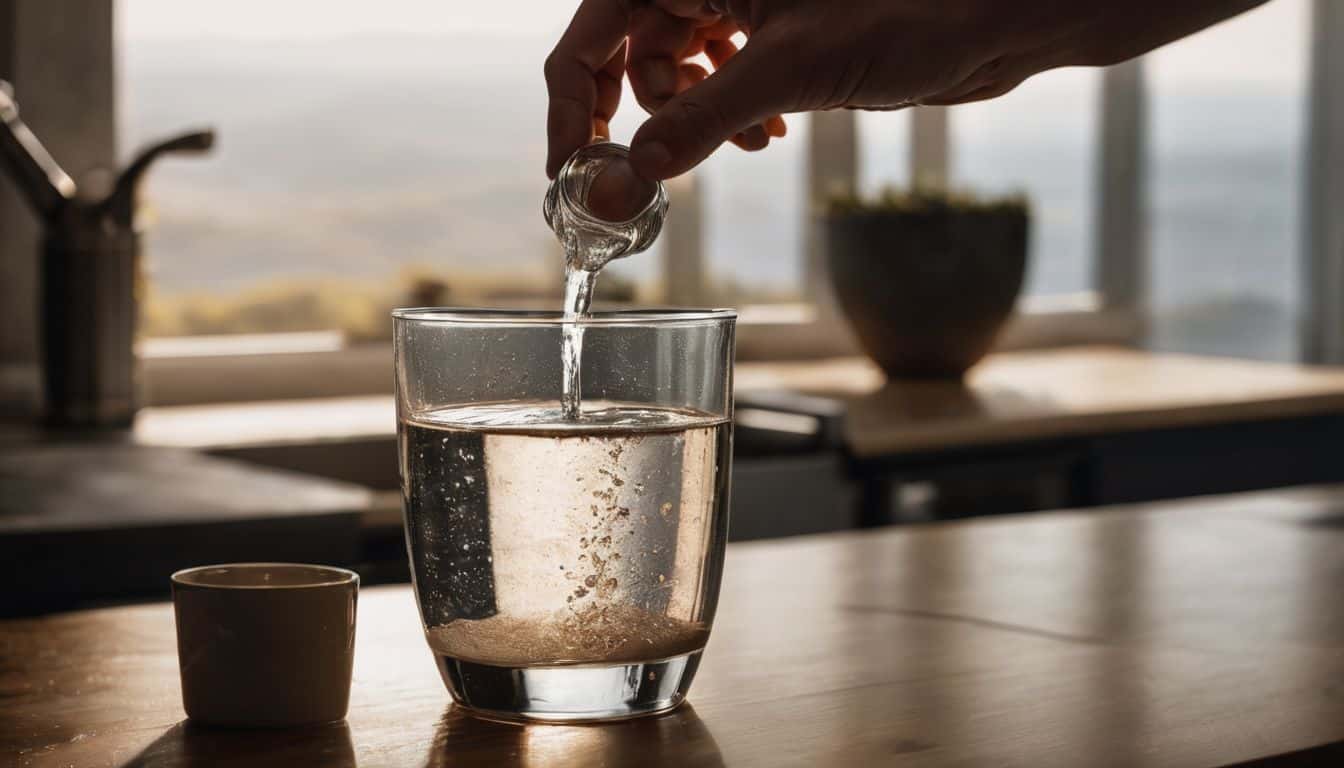
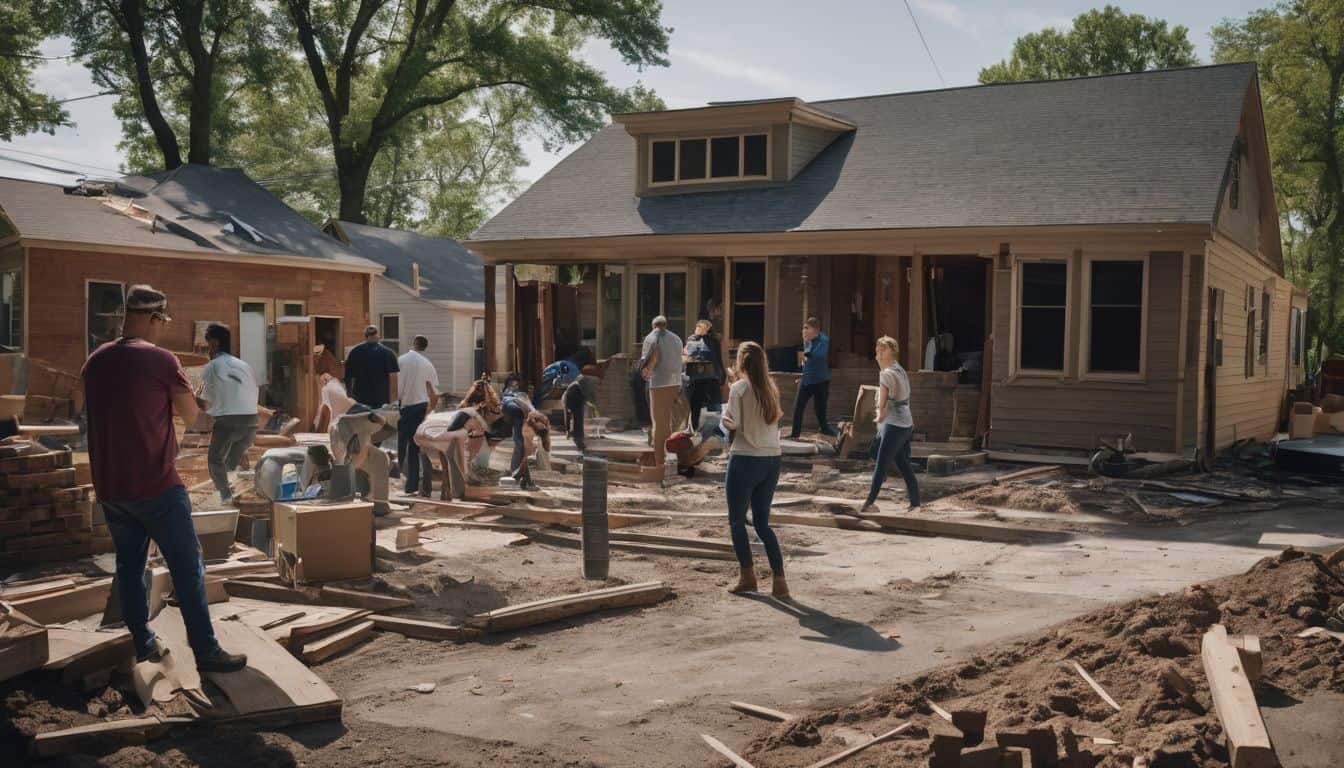
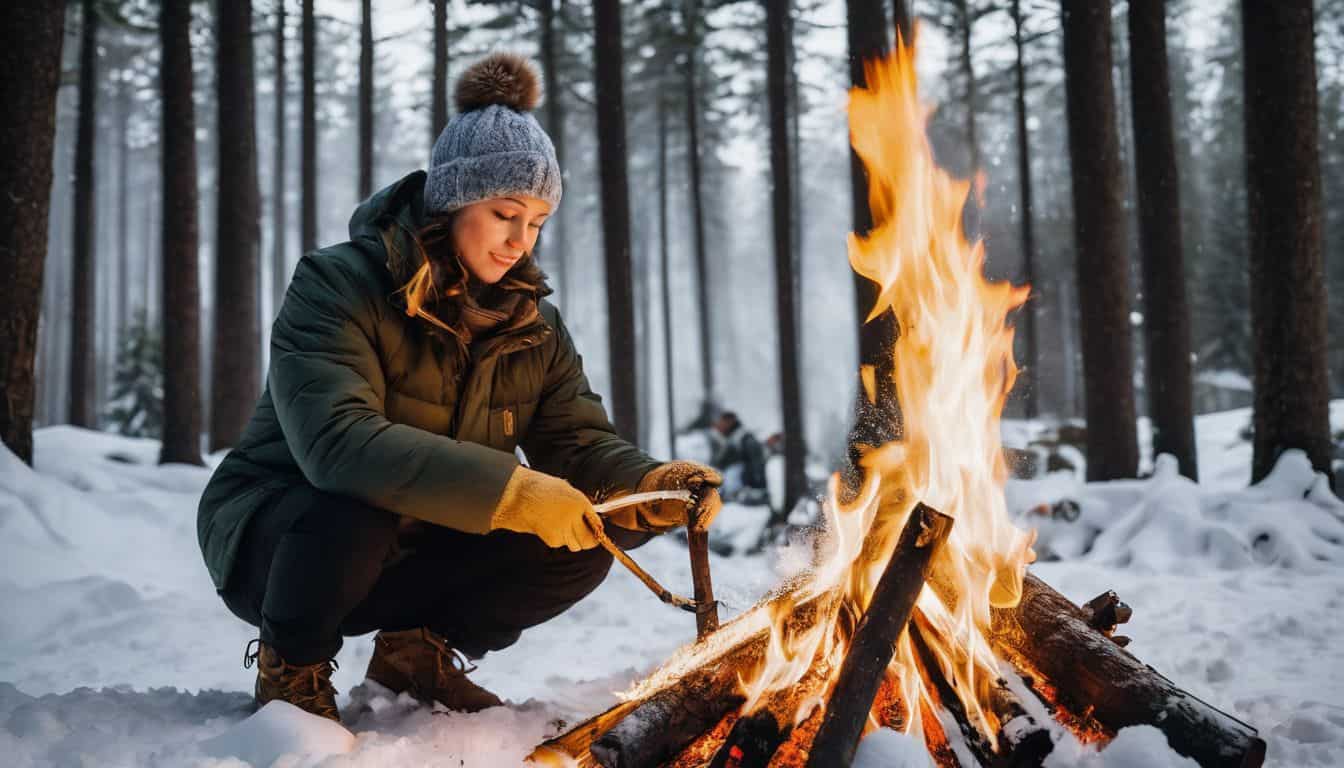
Leave a Reply